Remembering Gene Cernan, the last man to walk on the moon
Died on Monday, January 16, 2017
Eugene Cernan in Lunar Module
Apollo 17 mission commander Eugene Cernan inside the lunar module on the moon after his second moonwalk of the mission. His spacesuit is covered with lunar dust
“We leave as we came, and, God willing, we shall return, with peace and hope for all mankind.” — Cernan’s closing words on leaving the moon at the end of Apollo 17
Eugene Cernan, the last man to walk on the moon, died Monday, Jan. 16, surrounded by his family.
Cernan, a Captain in the U.S. Navy, left his mark on the history of exploration by flying three times in space, twice to the moon. He also holds the distinction of being the second American to walk in space and the last human to leave his footprints on the lunar surface.
He was one of 14 astronauts selected by NASA in October 1963. He piloted the Gemini 9 mission with Commander Thomas P. Stafford on a three-day flight in June 1966. Cernan logged more than two hours outside the orbiting capsule.
In May 1969, he was the lunar module pilot of Apollo 10, the first comprehensive lunar-orbital qualification and verification test of the lunar lander. The mission confirmed the performance, stability, and reliability of the Apollo command, service and lunar modules. The mission included a descent to within eight nautical miles of the moon’s surface.
In a 2007 interview for NASA’s oral histories, Cernan said, “I keep telling Neil Armstrong that we painted that white line in the sky all the way to the Moon down to 47,000 feet so he wouldn’t get lost, and all he had to do was land. Made it sort of easy for him.”
Apollo 17 Commander Eugene A. Cernan and the U.S. flag on the lunar surface.
Apollo 17 commander Eugene A. Cernan is holding the lower corner of the American flag during the mission’s first EVA, December 12, 1972. Photograph by Harrison J. “Jack” Schmitt. Image Credit: NASA
Cernan and Evans in Apollo 17 Credits: NASA
Cernan concluded his historic space exploration career as commander of the last human mission to the moon in December 1972. En route to the moon, the crew captured an iconic photo of the home planet, with an entire hemisphere fully illumnitated — a “whole Earth” view showing Africa, the Arabian peninsula and the south polar ice cap. The hugely popular photo was referred to by some as the “Blue Marble,” a title in use for an ongoing series of NASA Earth imagery.
Apollo 17 established several new records for human space flight, including the longest lunar landing flight (301 hours, 51 minutes); longest lunar surface extravehicular activities (22 hours, 6 minutes); largest lunar sample return (nearly 249 pounds); and longest time in lunar orbit (147 hours, 48 minutes).
Cernan and crewmate Harrison H. (Jack) Schmitt completed three highly successful excursions to the nearby craters and the Taurus-Littrow mountains, making the moon their home for more than three days. As he left the lunar surface, Cernan said, “America’s challenge of today has forged man’s destiny of tomorrow. As we leave the moon and Taurus-Littrow, we leave as we came, and, God willing, we shall return, with peace and hope for all mankind.”
Apollo 17 astronauts Gene Cernan and Jack Schmitt sing while walking on the moon during the last Apollo lunar landing mission. NASA.gov Video “I Was Strolling on the Moon One Day” the link on YouTube is as the following: https://www.youtube.com/watch?v=Zl_VdN6rfrQ
“Apollo 17 built upon all of the other missions scientifically,” said Cernan in 2008, recalling the mission as the agency celebrated its 50th Anniversary. “We had a lunar rover, we were able to cover more ground than most of the other missions. We stayed there a little bit longer. We went to a more challenging unique area in the mountains, to learn something about the history and the origin of the moon itself.”
On their way to the moon, the Apollo 17 crew took one of the most iconic photographs in space-program history, the full view of the Earth dubbed “The Blue Marble.” Despite it’s fame, the photograph hasn’t really been appreciated, Cernan said in 2007.
This classic photograph of the Earth was taken on December 7, 1972.
Credits: NASA
“What is the real meaning of seeing this picture? I’ve always said, I’ve said for a long time, I still believe it, it’s going to be — well it’s almost fifty now, but fifty or a hundred years in the history of mankind before we look back and really understand the meaning of Apollo. Really understand what humankind had done when we left, when we truly left this planet, we’re able to call another body in this universe our home. We did it way too early considering what we’re doing now in space. It’s almost as if JFK reached out into the twenty-first century where we are today, grabbed hold of a decade of time, slipped it neatly into the (nineteen) sixties and seventies (and) called it Apollo.”
On July 1, 1976, Cernan retired from the Navy after 20 years and ended his NASA career. He went into private business and served as television commentator for early fights of the space shuttle.
Last Updated: Jan. 16, 2017
Editor: Brian Dunbar
Tags: NASA History
Jan. 16, 2017
RELEASE 17-007
NASA Administrator Reflects on Legacy of Last Man to Walk on Moon
The following is a statement from NASA Administrator Charles Bolden on the passing of Gemini and Apollo astronaut Gene Cernan:
“Gene Cernan, Apollo astronaut and the last man to walk on the moon, has passed from our sphere, and we mourn his loss. Leaving the moon in 1972, Cernan said, ‘As I take these last steps from the surface for some time into the future to come, I’d just like to record that America’s challenge of today has forged man’s destiny of tomorrow.’ Truly, America has lost a patriot and pioneer who helped shape our country’s bold ambitions to do things that humankind had never before achieved.
“Gene first served his country as a Naval Aviator before taking the pilot’s seat on the Gemini 9 mission, where he became the second American to walk in space and helped demonstrate rendezvous techniques that would be important later. As a crew member of both the Apollo 10 and 17 missions, he was one of three men to have flown twice to the moon. He commanded Apollo 17 and set records that still stand for longest manned lunar landing flight, longest lunar surface extravehicular activities, largest lunar sample return, and longest time in lunar orbit.
“Gene’s footprints remain on the moon, and his achievements are imprinted in our hearts and memories. His drive to explore and do great things for his country is summed up in his own words:
‘We truly are in an age of challenge. With that challenge comes opportunity. The sky is no longer the limit. The word impossible no longer belongs in our vocabulary. We have proved that we can do whatever we have the resolve to do. The limit to our reach is our own complacency.’
“In my last conversation with him, he spoke of his lingering desire to inspire the youth of our nation to undertake the STEM (science, technology, engineering and mathematics) studies, and to dare to dream and explore. He was one of a kind and all of us in the NASA Family will miss him greatly.”
For more information about Cernan’s NASA career, visit:
-end-
Bob Jacobs
Headquarters, Washington
202-358-1600
bob.jacobs@nasa.gov
Last Updated: Jan. 16, 2017
Editor: Allard Beutel
Tags: NASA History
Read Full Article
Gemini IXA Splashes Down
The Gemini IXA spacecraft, with command pilot Tom Stafford and pilot Eugene Cernan aboard, splashes down in the Atlantic Ocean on June 6, 1966, less than one mile from the prime recovery ship, the aircraft carrier USS Wasp. It was the first time a spacecraft descending on its parachute was shown on live television
Looking Back at the Gemini IX Spacecraft “What a beautiful spacecraft,” said Gemini IX pilot Eugene Cernan during his two hour, eight minute spacewalk on June 5, 1966. He took this wide-angle photograph looking back at the window where command pilot Tom Stafford was watching.
Gemini IXA Pilot Eugene Cernan Spacewalk
During his two hour, eight minute spacewalk on June 5, 1966, Gemini IXA pilot Eugene Cernan is seen outside the spacecraft. His experience during that time showed there was still much to be learned about working in microgravity.
Gemini IXA Astronauts at Launch Pad 19
After two postponements, Gemini IXA astronauts Eugene Cernan, left, and Tom Stafford, center, arrive in the white room atop Launch Pad 19 at Cape Kennedy Air Force Station on June 3, 1966. Stafford is presenting a large match to McDonnell Aircraft Corporation’s pad leader Gunter Wendt, far right.
Apollo 10 Launch The Apollo 10 (Spacecraft 106/Lunar Module 4/Saturn 505) space vehicle with crew members Eugene Cernan, John Young and Thomas Stafford on board is launched from Pad B, Launch Complex 39, Kennedy Space Center at 12:49 p.m., May 18, 1969.
Apollo 10 Rollout Apollo 10 rollout from the Vehicle Assembly Building (VAB) to Launch Complex 39B. This mission launched on May 18, 1969. The crew of Tom Stafford, Gene Cernan and John Young
flew the “dress rehearsal” for the first human landing on the moon.
Apollo 10 Lunar Module Ascends After dropping down to 47,400 feet above the moon’s surface, Thomas Stafford and Eugene Cernan aboard the ascent stage of Apollo 10 lunar module, return to John Young in the command module on May 22, 1969.
Apollo 10 Crew
The crew of Apollo 10, from the left, Eugene Cernan, John Young and Thomas Stafford are photographed while at the Kennedy Space Center. In the background is the Apollo 10 space vehicle on Launch Pad 39 B, The three crewmen had just completed a Countdown Demonstration Test exercise on May 13, 1969.
41 Years Ago this Week – Apollo 17
During the second spacewalk on December 12, 1972, Apollo 17 Mission Commander Eugene A. Cernan is standing near the lunar rover designed by Marshall Space Flight Center in Huntsville, Ala.
Apollo 17 Launch
The huge, 363-feet tall Apollo 17 (Spacecraft 114/Lunar Module 12/Saturn 512) space vehicle is launched from Pad A., Launch Complex 39, Kennedy Space Center (KSC), Florida, at 12:33 a.m. (EST), Dec. 7, 1972.
Apollo 17, the final lunar landing mission in NASA’s Apollo program, was the first nighttime liftoff of the Saturn V launch vehicle.
Apollo 17 Mission Commander Eugene Cernan Drives Lunar Roving Vehicle
Apollo 17 mission commander Eugene Cernan drives the lunar roving vehicle during the early part of the first moonwalk at the Taurus-Littrow landing site. The Lunar Module is in the background.
Gene Cernan at Armstrong Memorial
Apollo 17 mission commander Gene Cernan, the last man to walk on the moon, looks skyward during a memorial service celebrating the life of Neil Armstrong at the Washington National Cathedral, Thursday, Sept. 13, 2012. Armstrong, the first man to walk on the moon during the 1969 Apollo 11 mission, died Saturday, Aug. 25. He was 82.
Gene Cernan Speaks at Armstrong Memorial Service Apollo 17 astronaut Gene Cernan, the last man to walk on the moon, speaks during a memorial service celebrating the life of Neil Armstrong at the Washington National Cathedral, Thursday, Sept. 13, 2012. Armstrong, the first man to walk on the moon during the 1969 Apollo 11 mission, died Saturday, Aug. 25. He was 82.
Apollo 17 Splashdown The Apollo 17 spacecraft, containing astronauts Eugene A. Cernan, Ronald E. Evans, and Harrison H. Schmitt, glided to a safe splashdown at 2:25 p.m. EST on Dec. 19, 1972, 648 kilometers (350 nautical miles) southeast of American Samoa.
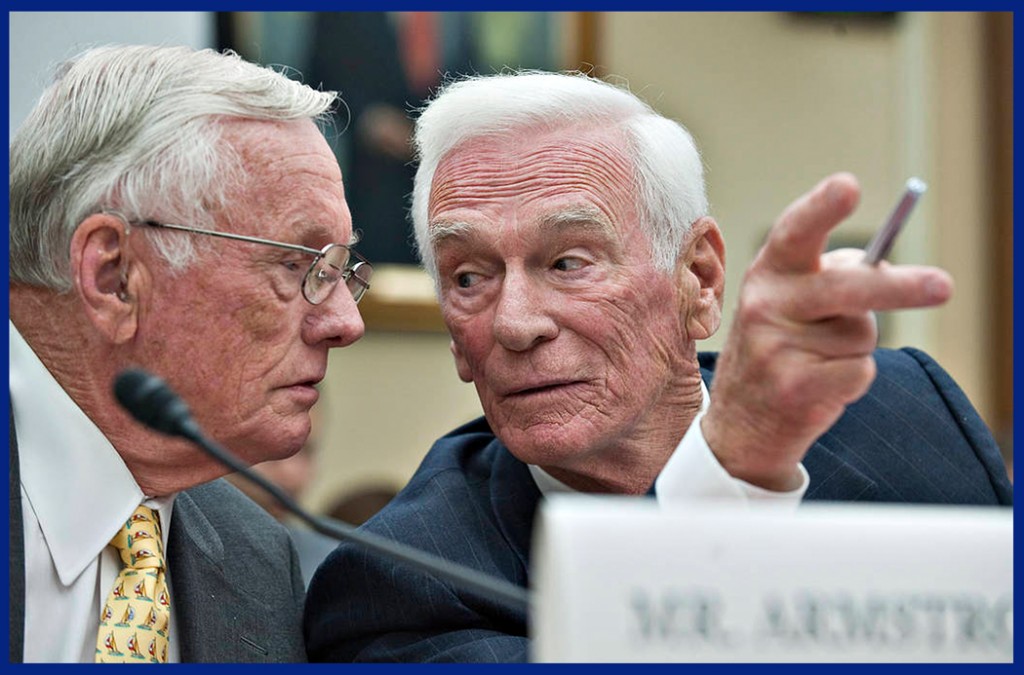 House Hearing on NASA Human Spaceflight Plan
House Hearing on NASA Human Spaceflight Plan
Apollo 11 Commander Neil Armstrong, left, and retired Navy Captain and commander of Apollo 17 Eugene Cernan, confer prior to testifying at a hearing before the House Science and Technology Committee, Tuesday, May 26, 2010, at the Rayburn House office building on Capitol Hill in Washington. The hearing was to review proposed human spaceflight plans.
Apollo 40th Anniversary Press Conference On July 20, 2009, Apollo astronauts from left, Walt Cunningham (Apollo 7), James Lovell (Apollo 8 Apollo 13), David Scott (Apollo 9 Apollo 15), Buzz Aldrin (Apollo 11), Charles Duke (Apollo 16), Thomas Stafford (Apollo 10) and Eugene Cernan (Apollo 17) are seen during the 40th anniversary of the Apollo 11 mission press conference.
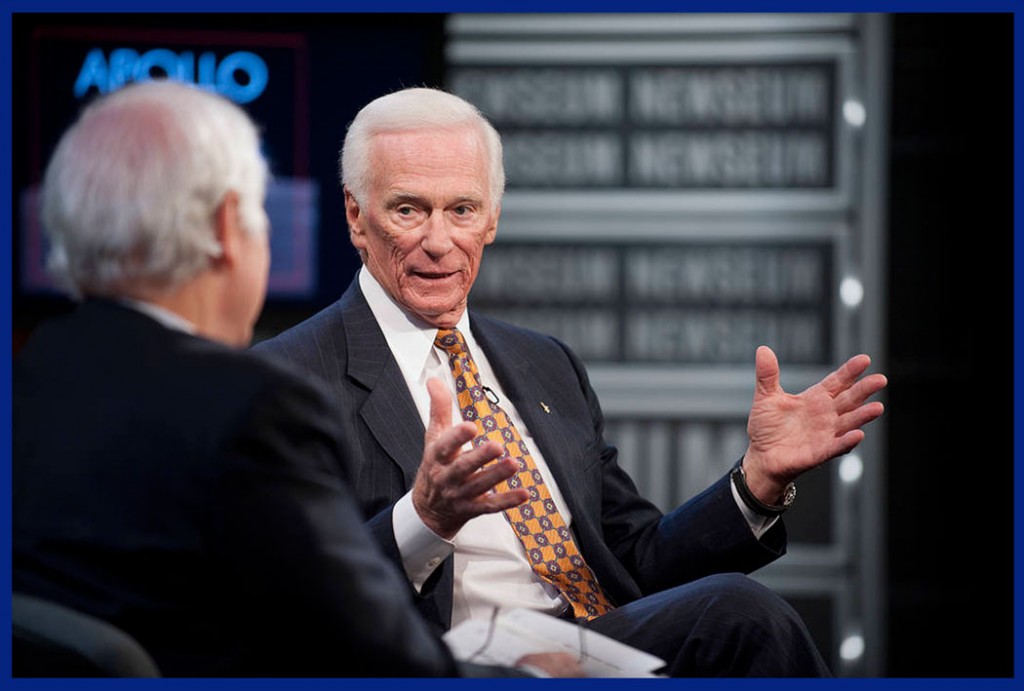 Apollo 10 40th Anniversary Program NASA Apollo 10 Astronaut Gene Cernan, right, answers questions from the Newseum’s distinguished journalist-in-residence, Nick Clooney during a Newseum TV program celebrating the 40th anniversary of Apollo 10, Monday, May 18, 2009, in Washington.
Apollo 10 40th Anniversary Program NASA Apollo 10 Astronaut Gene Cernan, right, answers questions from the Newseum’s distinguished journalist-in-residence, Nick Clooney during a Newseum TV program celebrating the 40th anniversary of Apollo 10, Monday, May 18, 2009, in Washington.
Suited Up for Apollo 10 Mission – May 1969 Astronaut Eugene A. Cernan, Apollo 10 lunar module pilot, is suited up at NASA’s Kennedy Space Center in Florida for a Countdown Demonstration Test during preparations for his scheduled lunar orbit mission. The other two crew members are astronauts Thomas P. Stafford, commander, and John W. Young, command module pilot.
Apollo 17 Launch A Saturn V rocket streaks toward space on the night of December 17, 1972, carrying the Apollo 17 crew, the last astronauts to explore the moon. Leaving the lunar surface, Commander Gene Cernan said “we leave as we came, and, God willing, we shall return, with peace and hope for all mankind.”
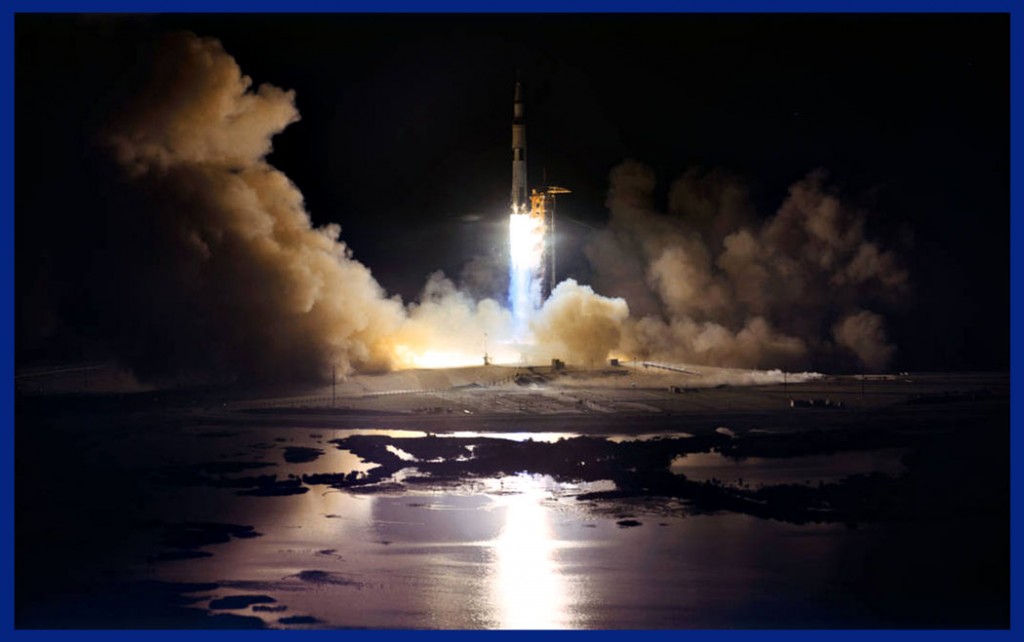 Apollo 17 Launch The huge, 363-feet tall Apollo 17 (Spacecraft 114/Lunar Module 12/Saturn 512) space vehicle is launched from Pad A, Launch Complex 39, Kennedy Space Center (KSC), Florida, at 12:33 a.m. (EST), Dec. 7, 1972. Apollo 17, the final lunar landing mission in NASA’s Apollo program, was the first nighttime liftoff of the Saturn V.
Apollo 17 Launch The huge, 363-feet tall Apollo 17 (Spacecraft 114/Lunar Module 12/Saturn 512) space vehicle is launched from Pad A, Launch Complex 39, Kennedy Space Center (KSC), Florida, at 12:33 a.m. (EST), Dec. 7, 1972. Apollo 17, the final lunar landing mission in NASA’s Apollo program, was the first nighttime liftoff of the Saturn V.
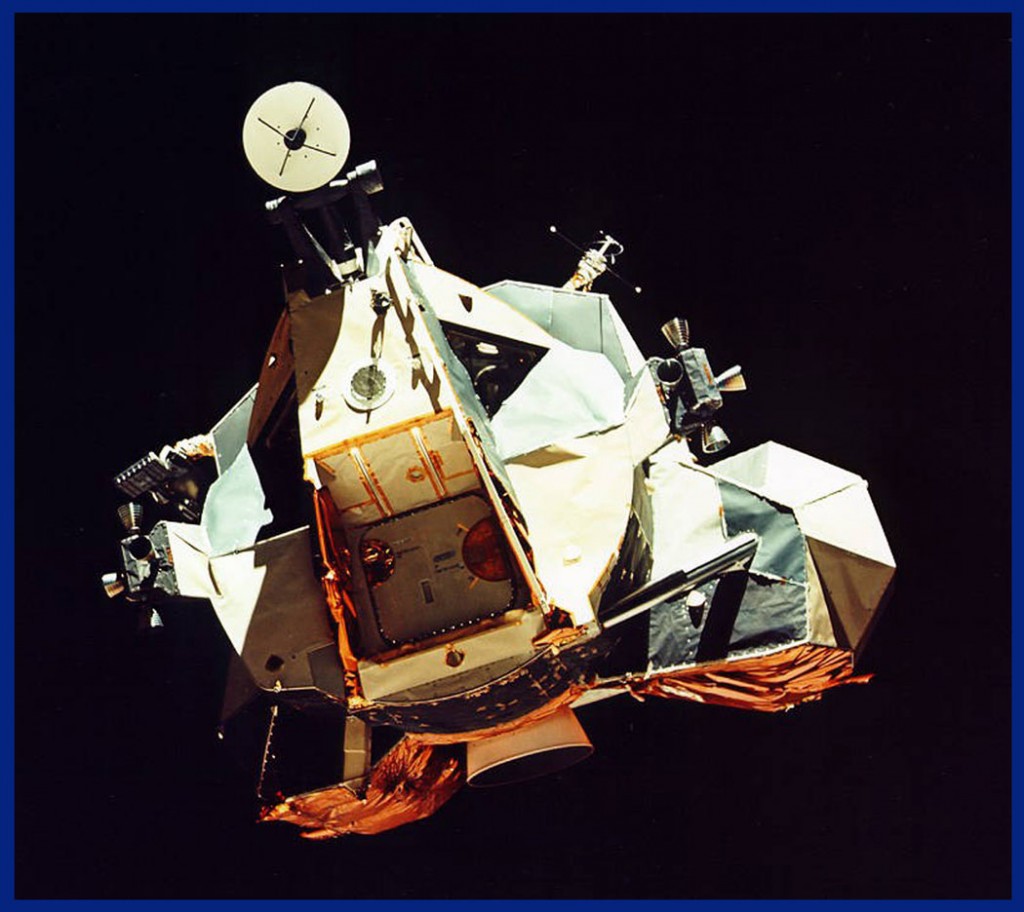 Apollo 17’s Moonship Awkward and angular looking, Apollo 17’s lunar module Challenger was designed for flight in the vacuum of space. This picture, taken from the command module America, shows Challenger’s ascent stage in lunar orbit. Small reaction control thrusters are at the sides of the moonship with the bell of the ascent rocket engine itself underneath.
Apollo 17’s Moonship Awkward and angular looking, Apollo 17’s lunar module Challenger was designed for flight in the vacuum of space. This picture, taken from the command module America, shows Challenger’s ascent stage in lunar orbit. Small reaction control thrusters are at the sides of the moonship with the bell of the ascent rocket engine itself underneath.
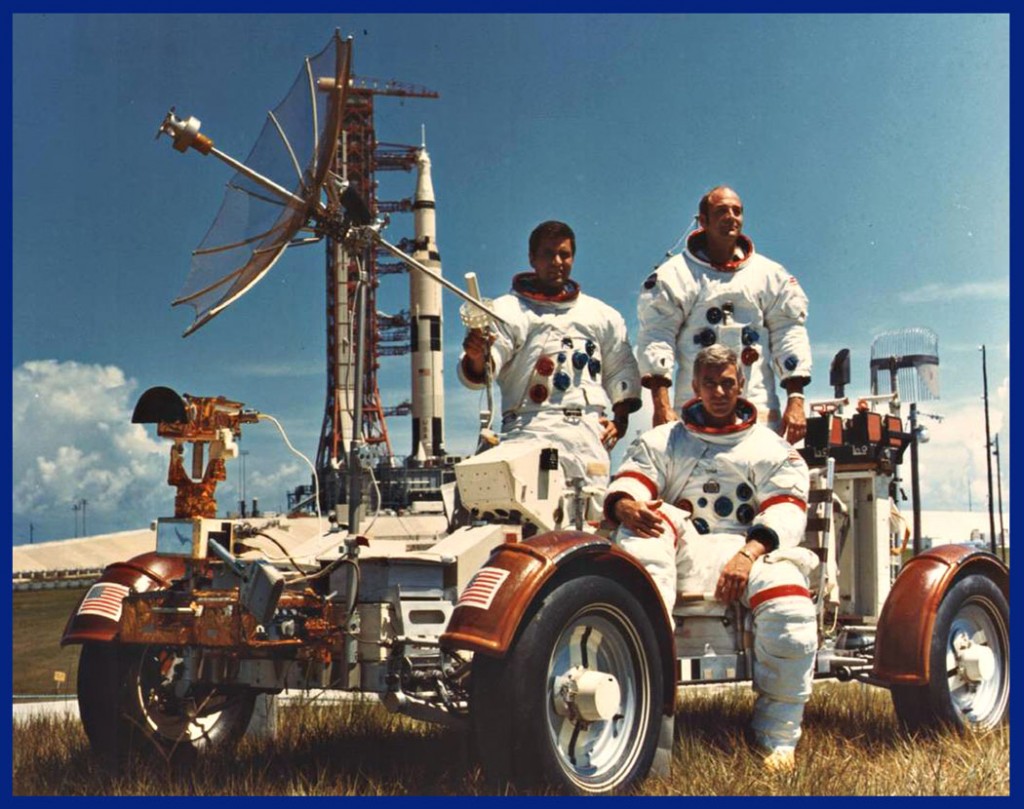 Apollo 17 Crew On Dec. 19, 1972, the Apollo 17 crew returned to Earth. Apollo 17 was the sixth and last Apollo mission in which humans walked on the lunar surface. On Dec. 11, Lunar Module Pilot Harrison H. Schmitt and Commander Eugene A. Cernan, landed on the moon’s Taurus-Littrow region in the Lunar Module.
Apollo 17 Crew On Dec. 19, 1972, the Apollo 17 crew returned to Earth. Apollo 17 was the sixth and last Apollo mission in which humans walked on the lunar surface. On Dec. 11, Lunar Module Pilot Harrison H. Schmitt and Commander Eugene A. Cernan, landed on the moon’s Taurus-Littrow region in the Lunar Module.
Driving on the Moon Apollo 17 mission commander Eugene A. Cernan makes a short checkout of the Lunar Roving Vehicle during the early part of the first Apollo 17 extravehicular activity at the Taurus-Littrow landing site. This view of the lunar rover prior to loadup was taken by Harrison H. Schmitt, Lunar Module pilot.
Apollo 17 – The Last Moon Shot
In 1865, Jules Verne wrote a science fiction story entitled, “From the Earth to the Moon.” The story outlined the author’s vision of a cannon in Florida so powerful that it could shoot a “Projectile-Vehicle” carrying three adventurers to the moon. More than 100 years later NASA produced the Saturn V rocket and from a spaceport in Florida.
Reflections of the Moon The surface of the moon is reflected in the command and service module as it prepares to rendezvous with the lunar module in this December 1972 image from the Apollo 17 mission.
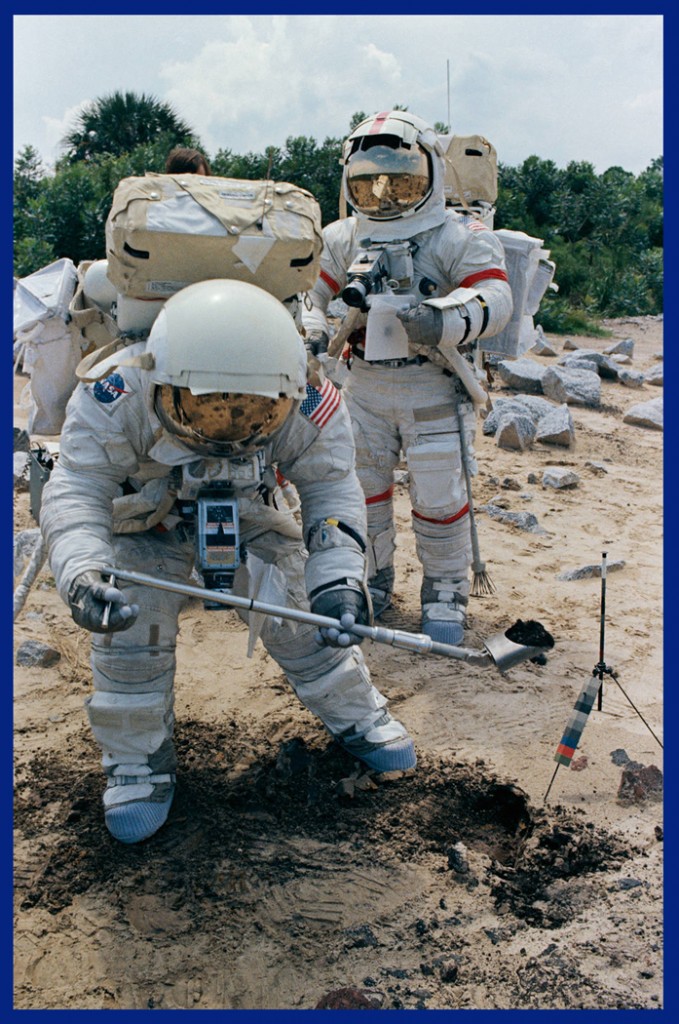 Training for the Apollo 17 Mission Two members of the prime crew of the Apollo 17 lunar landing mission participate in training at the Kennedy Space Center. Scientist-astronaut Harrison H. Schmitt (foreground), lunar module pilot, simulates scooping up lunar sample material. Astronaut Eugene A. Cernan (background), commander, holds a sample b
Training for the Apollo 17 Mission Two members of the prime crew of the Apollo 17 lunar landing mission participate in training at the Kennedy Space Center. Scientist-astronaut Harrison H. Schmitt (foreground), lunar module pilot, simulates scooping up lunar sample material. Astronaut Eugene A. Cernan (background), commander, holds a sample b
Blue Marble – Image of the Earth from Apollo 17
View of the Earth as seen by the Apollo 17 crew — astronaut Eugene A. Cernan, commander; astronaut Ronald E. Evans, command module pilot; and scientist-astronaut Harrison H. Schmitt, lunar module pilot — traveling toward the moon. This translunar coast photograph extends from the Mediterranean Sea area to the Antarctica South polar ice cap.



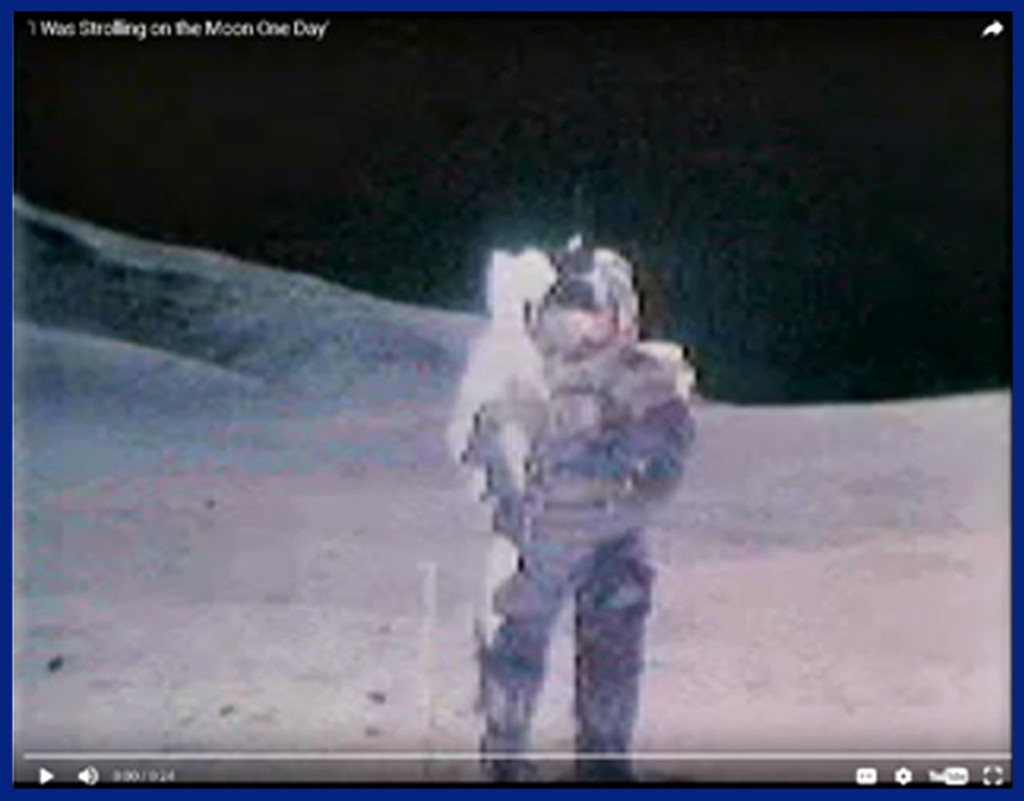

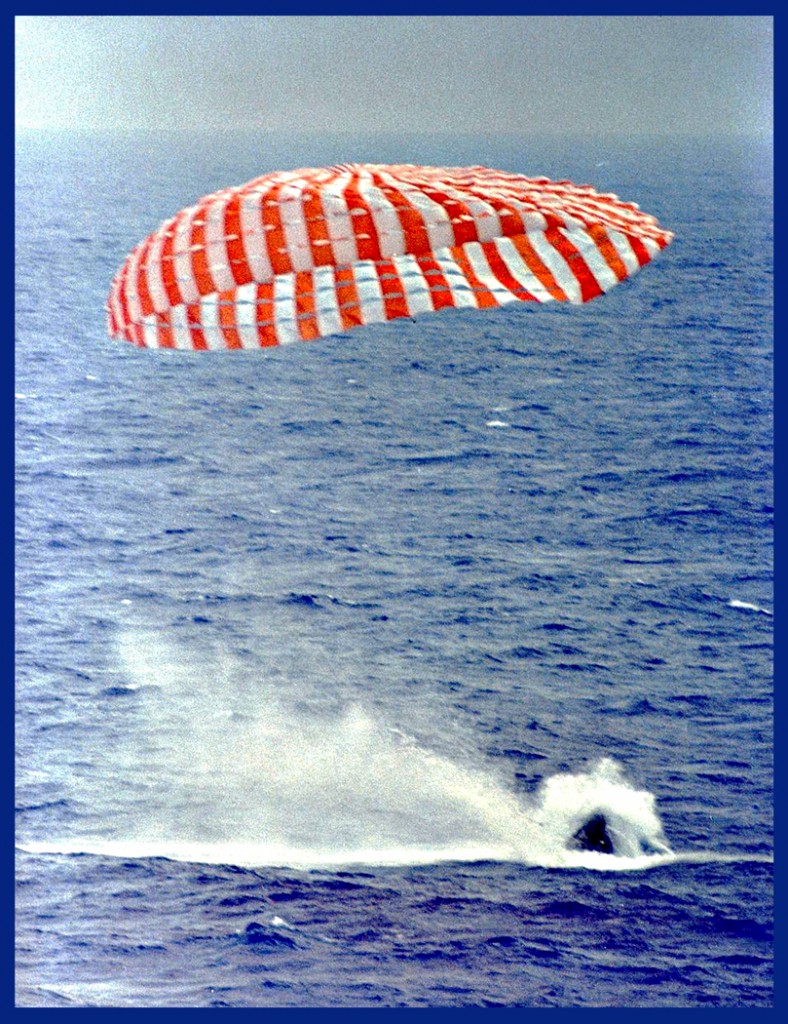


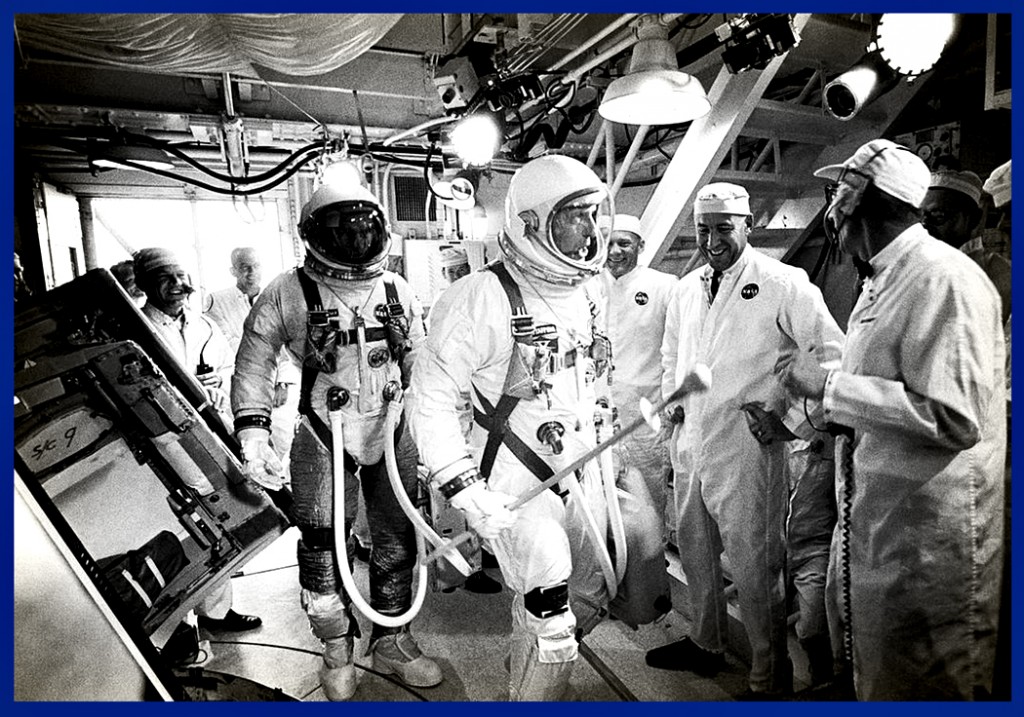
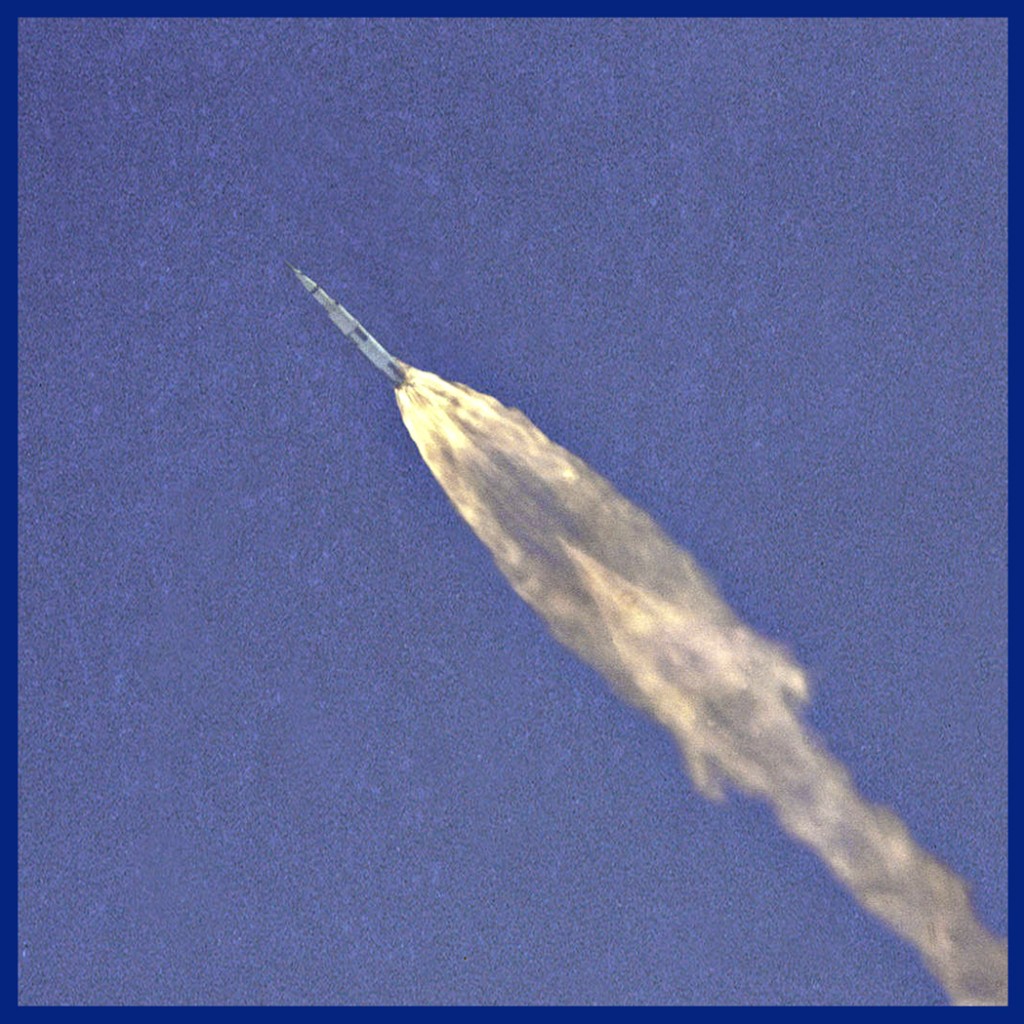
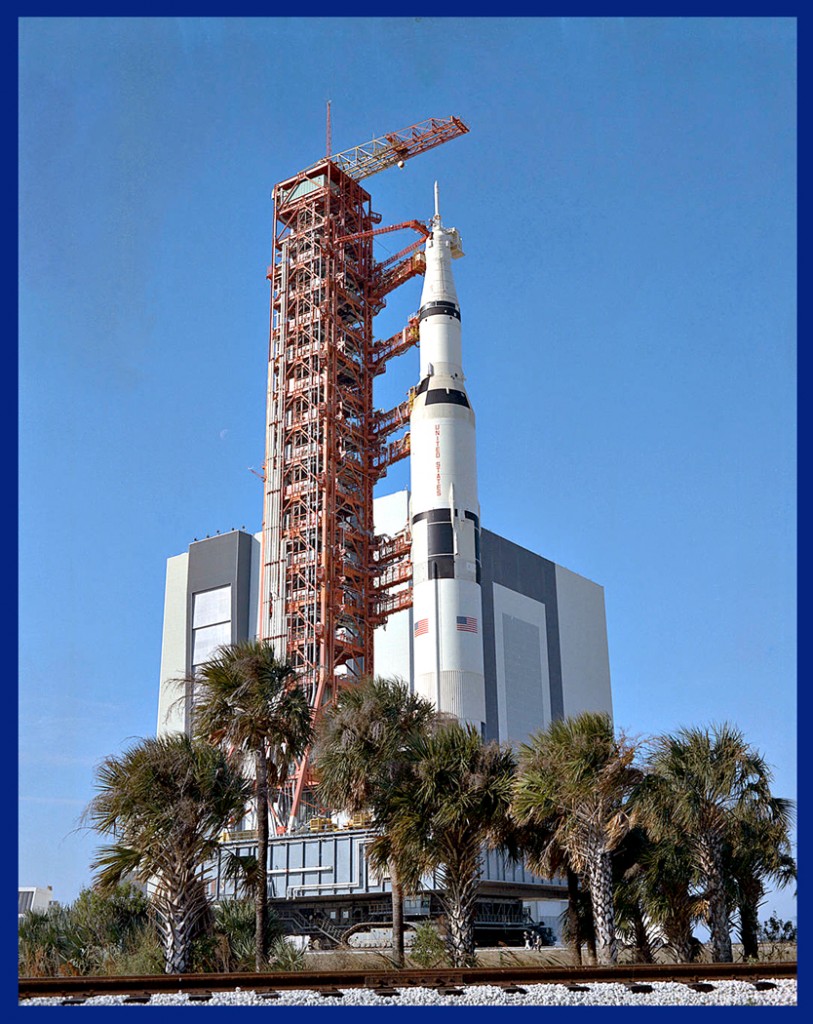

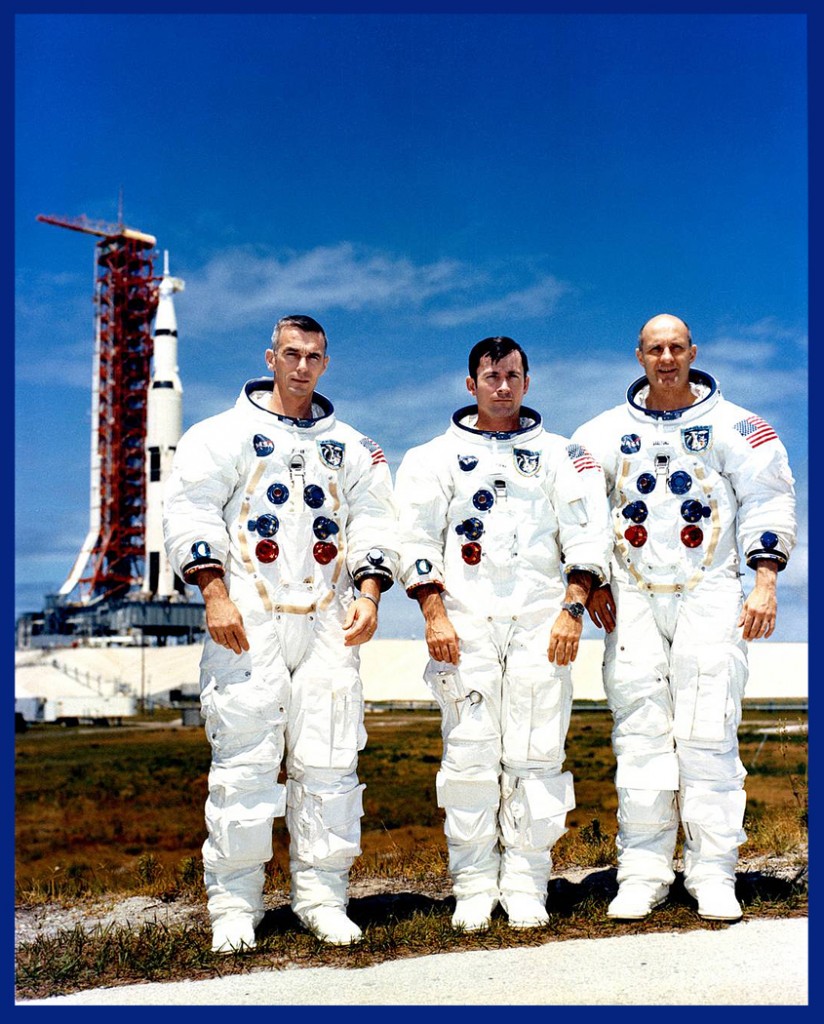

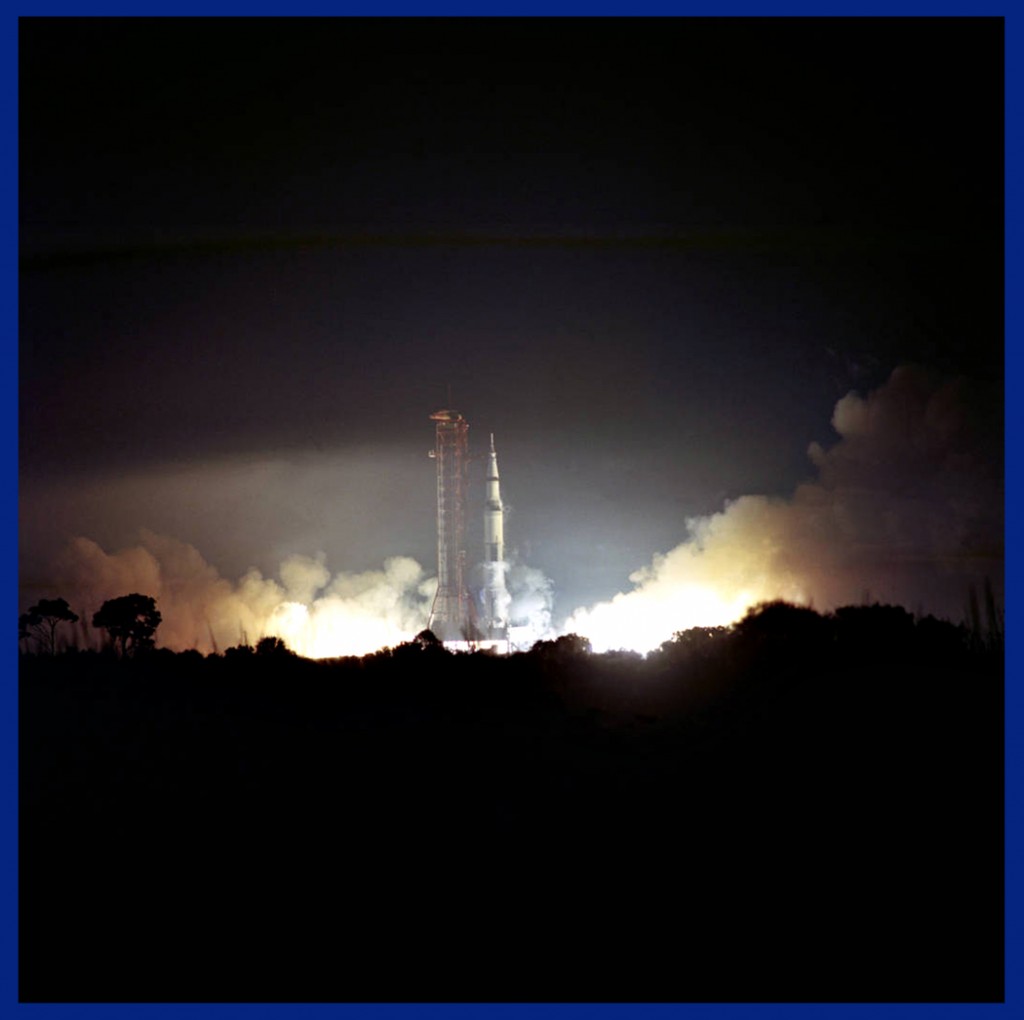

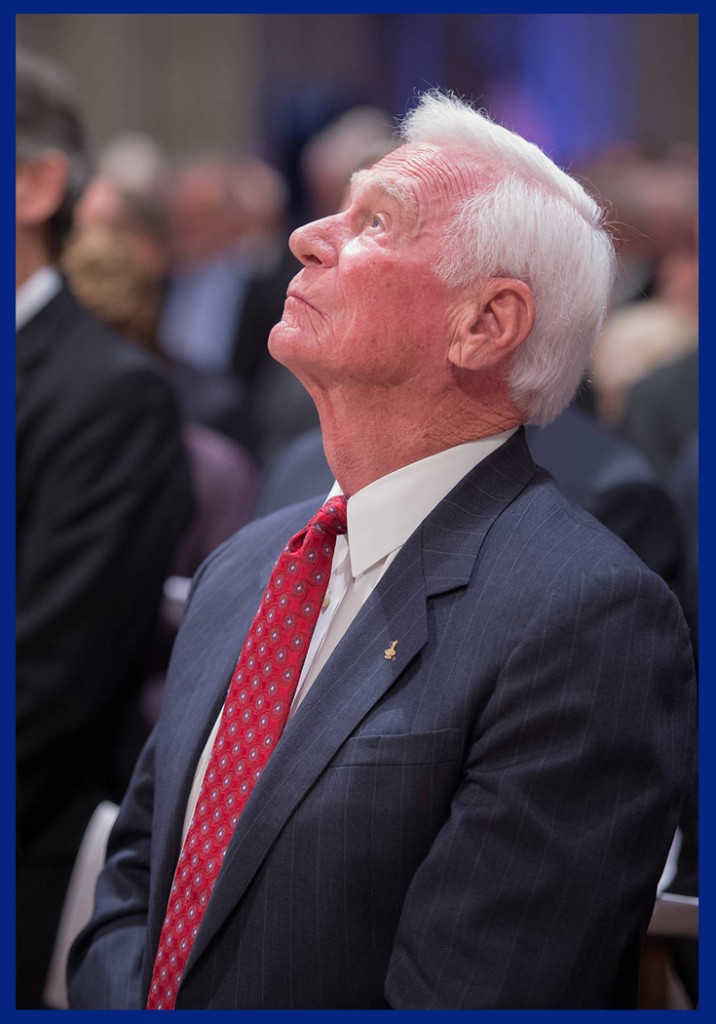

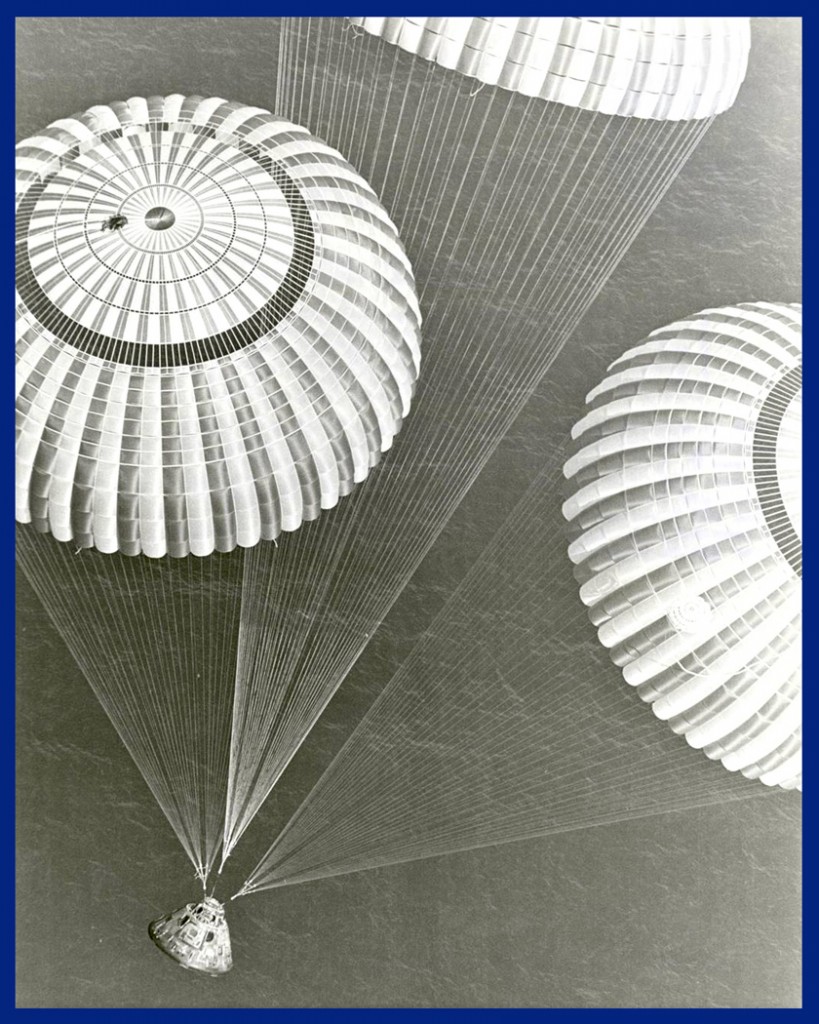
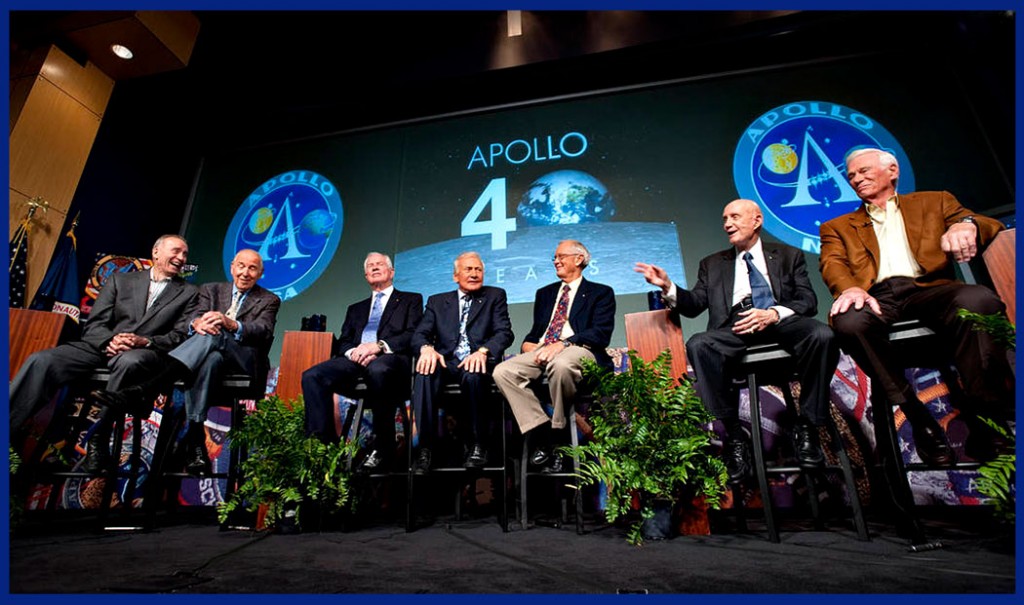

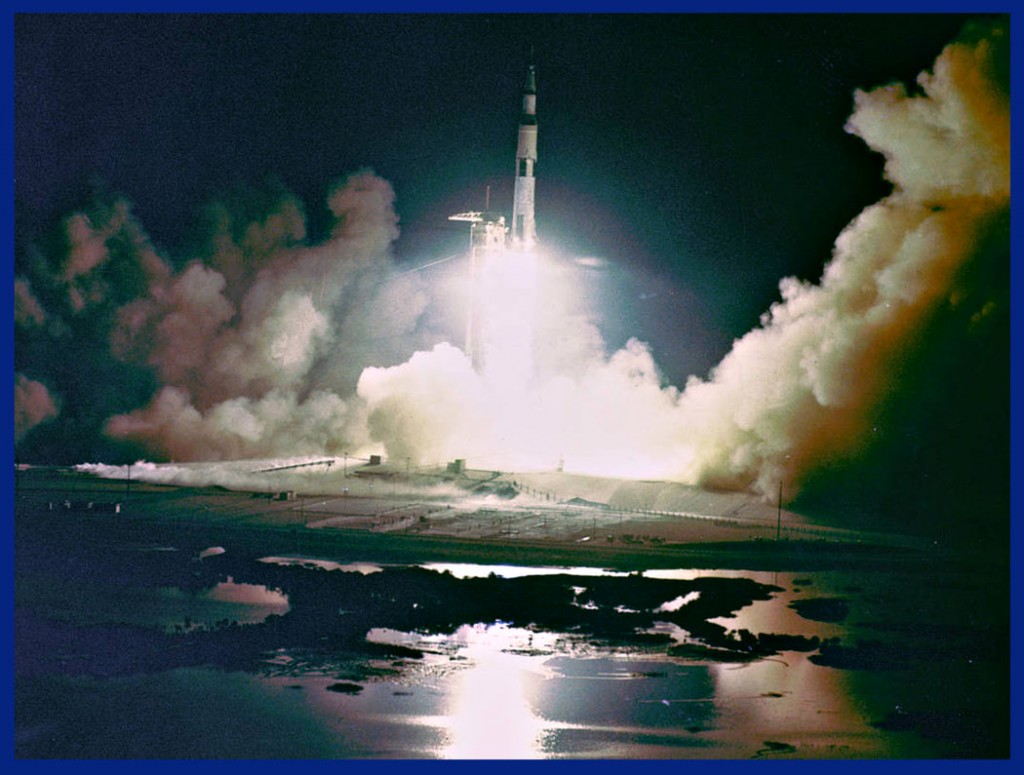
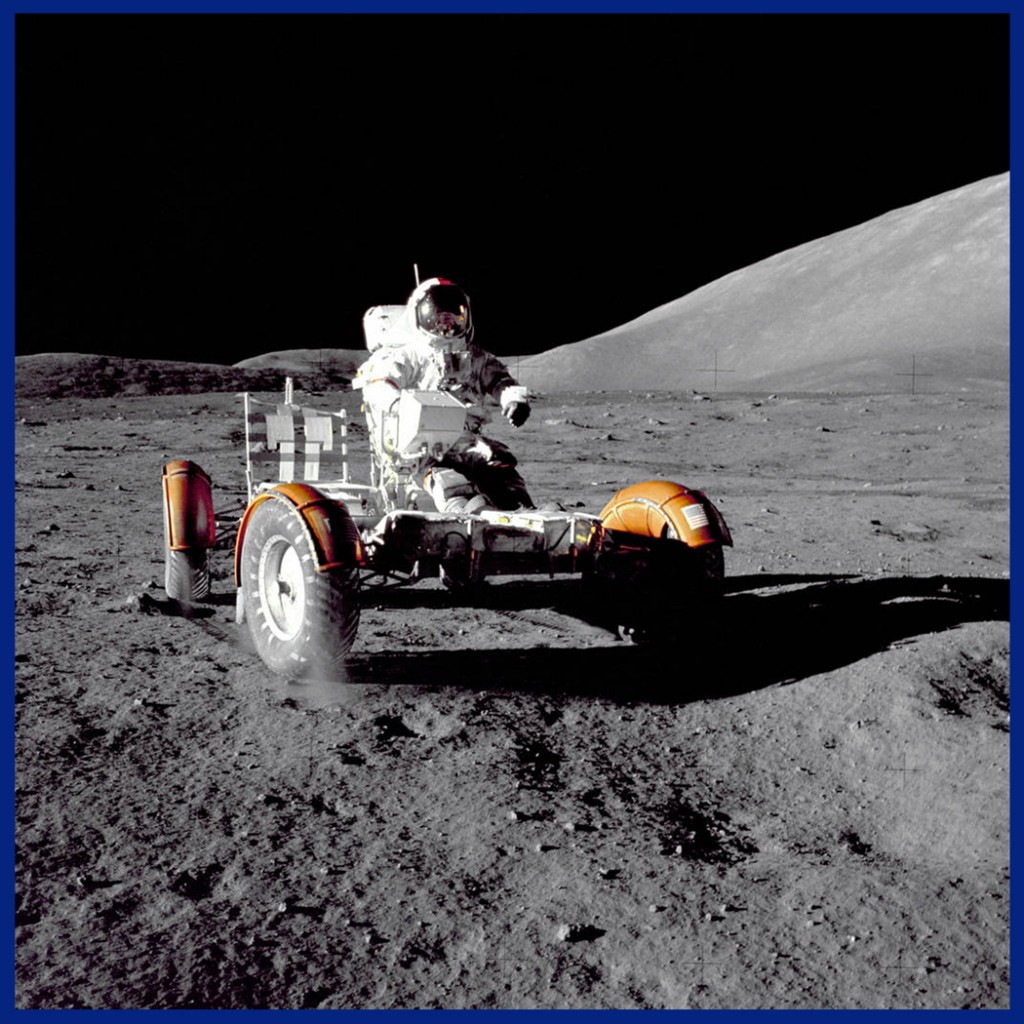
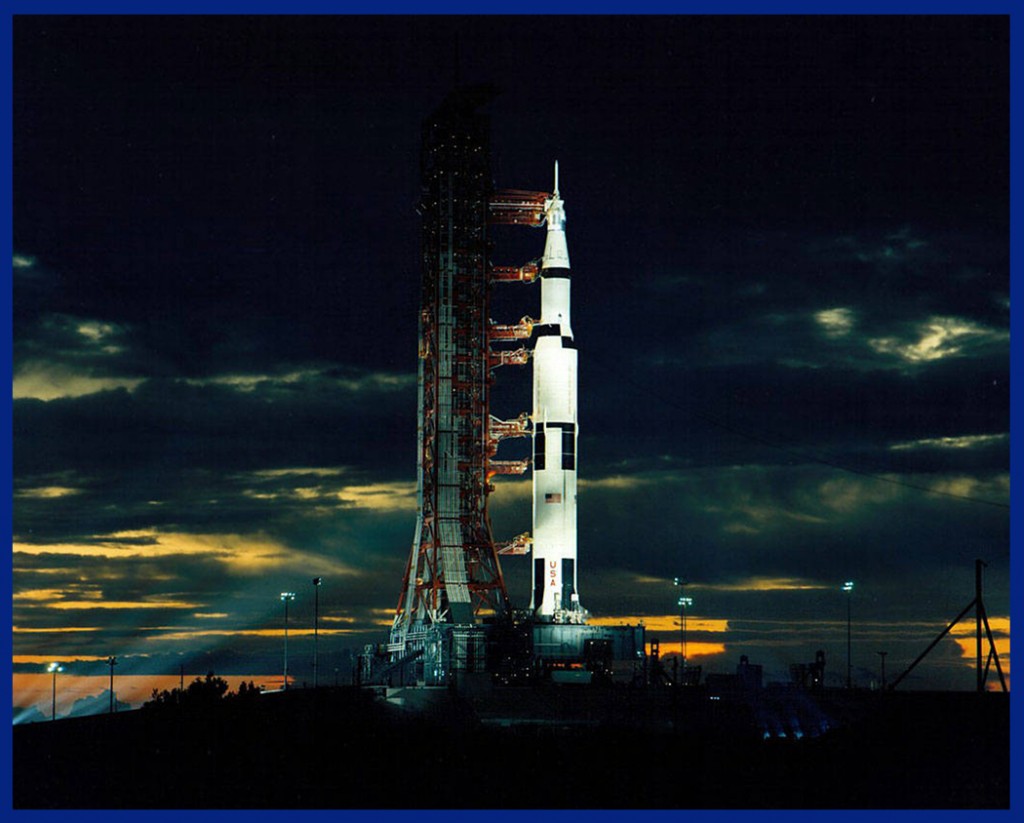
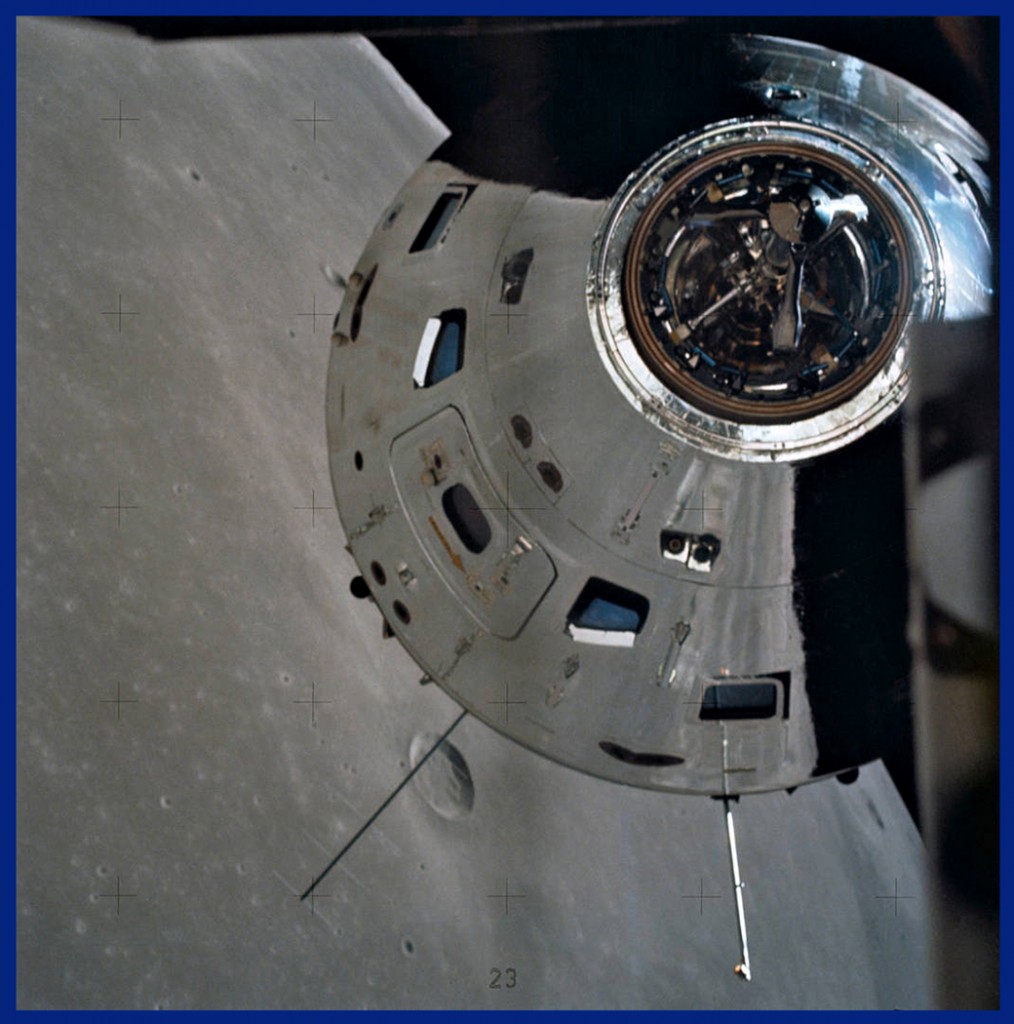

Leave a Reply